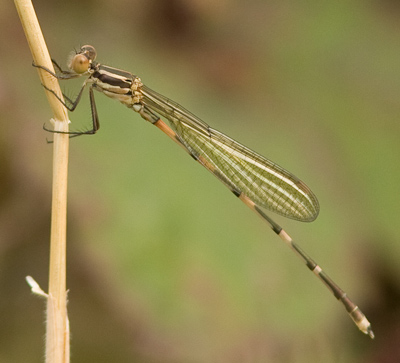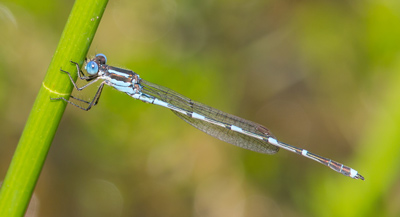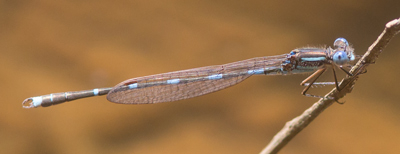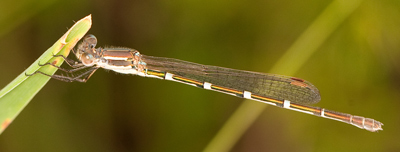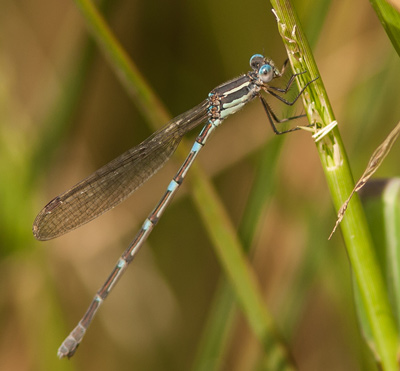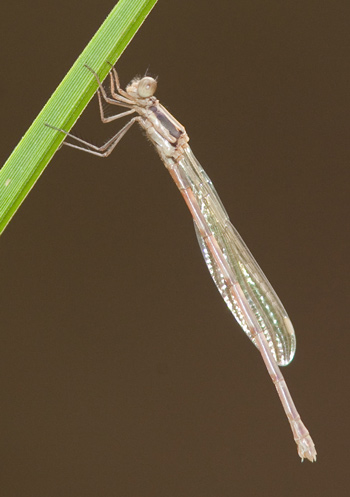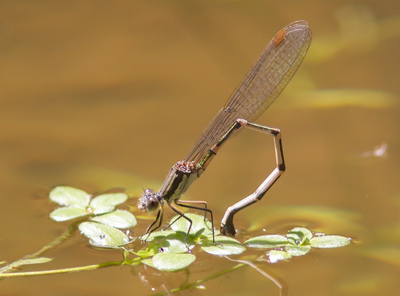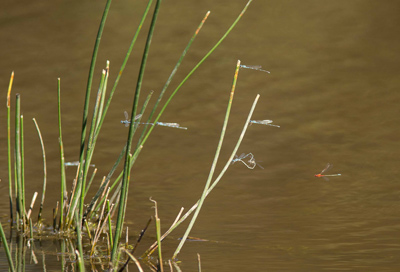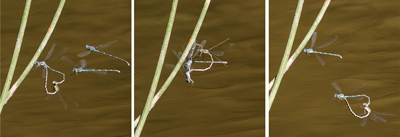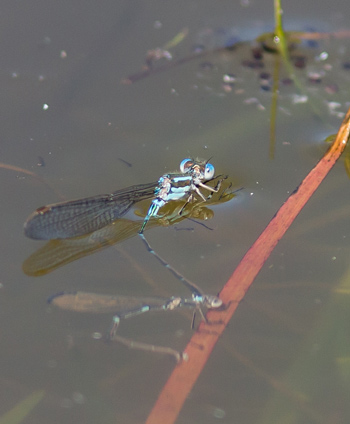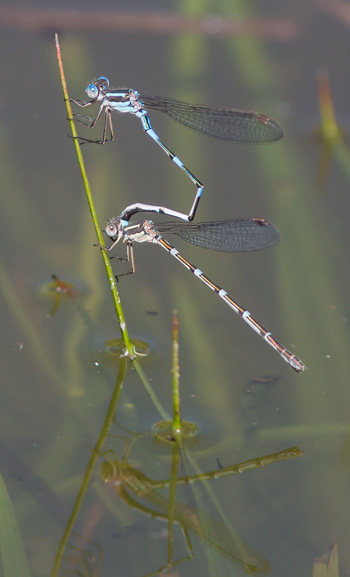Austrolestes leda (Selys, 1862)
WANDERING RINGTAIL
Family Lestidae
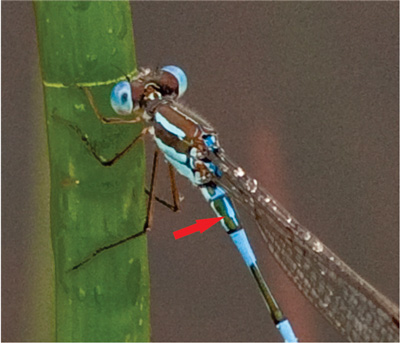
The red arrow indicates the distinctive mark on the 2nd abdominal segment of a male Austolestes leda.
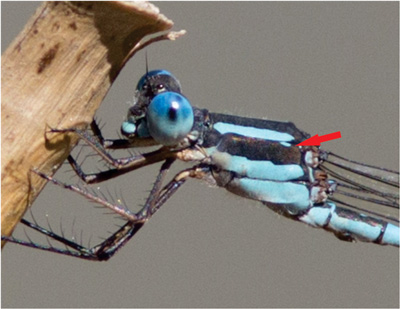
The red arrow indicates the extension of the humeral stripe across the mesopleural suture on the synthorax of a male Austolestes leda.
Austrolestes leda is the damselfly most likely to be encountered on the east coast of NSW. The only other damselfly in NE NSW that has a small piece of the humeral stripe crossing the mesopleural suture on the synthorax, is Austrolestes minjerriba, the Dune Ringtail. As the Dune Ringtail lives only around coastal dune lakes and swamps, it is not often seen. The other distinctive marking of the Wandering Ringtail is the dorsal stripe with a mid-bulge on the 2nd abdominal segment. This is not always easy to see however.
In suitable dams Wandering Ringtails can be found in good numbers. In January 2014, I visited a large dam on a neighbouring property near Deer Vale. A mating pair of Wandering Ringtails landed on a spikerush and a couple of male Wandering Ringtails came in for a closer look. One of these males dashed in and attacked the mating male which managed to fly off unharmed and still in the mating position.
I have more often seen Wandering Ringtails laying eggs in tandem but the female will also lay eggs alone. In November 2014, I watched a pair laying eggs, when she disappeared completely under water following the stem downwards. Shortly afterwards the male submerged as well. The female stayed underwater for over 1.5 minutes and the male about 30 secs. The same pair then moved to another spot and submerged again. The male was underwater for over 2.5 minutes this 2nd time. The third time the male had had enough and let the female go about her business and flew off.
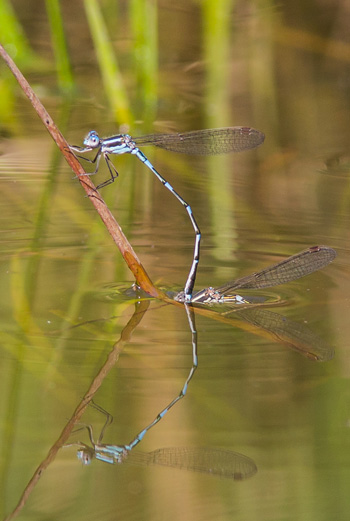
A tandem pair of Wandering Ringtails going under water to lay eggs at Deer Vale NSW on November 8th 2014.
